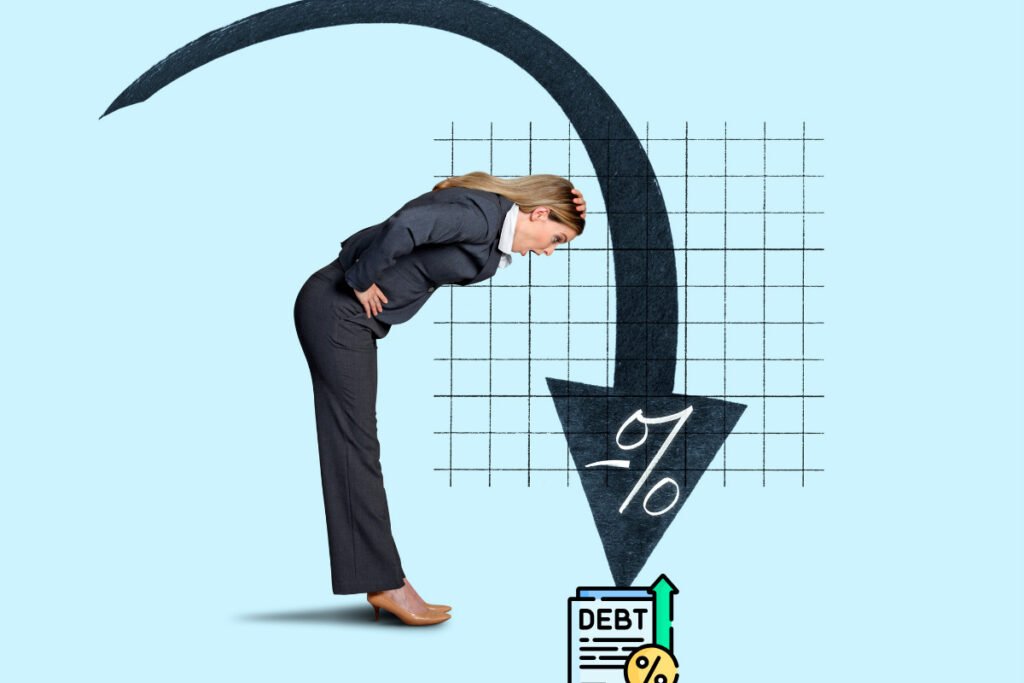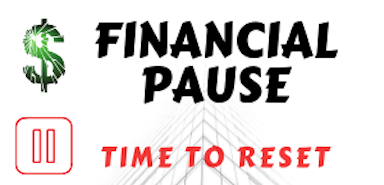Are you tired of being weighed down by high-interest debt and unsure how to reach financial freedom? The debt avalanche method is a simple way to get rid of debt quickly.
This method means paying the minimum on all debts. Then, use any extra money to pay off the debt with the highest interest rate. This way, you save on interest and move closer to being debt-free.
By using the debt avalanche method, you can take charge of your finances. You’ll make big strides towards financial freedom.
Key Takeaways
- Understand the debt avalanche method and its benefits.
- Learn how to apply the method to your financial situation.
- Discover how to save money on interest and become debt-free.
- Achieve financial freedom by eliminating high-interest debt.
- Take control of your financial situation with a straightforward strategy.
The Weight of Debt in American Households
American households face huge debt levels, a serious issue needing urgent action. Debt’s financial burden affects not just families but also the whole economy.
Current Debt Statistics in the United States
Recent data shows the depth of the problem. The CIBC Financial Priorities & Confidence Poll found 18% aim to pay off debt in 2023. Key statistics include:
- More households have high-interest debt.
- More people focus on paying off debt.
- Debt affects financial stability and growth.
The Psychological and Financial Impact of Carrying Debt
High-interest debt causes stress and anxiety. It also limits savings and investment, hurting long-term security. Using strategies like the debt avalanche method is key to financial control.

A clear need for a debt repayment plan is evident. Understanding debt’s impact helps families tackle financial challenges and aim for a debt-free life.
The Debt Avalanche Method Explained
The debt avalanche is a plan to pay off debts with the highest interest rates first. You list all your debts from highest to lowest interest. Then, you focus on the debt with the highest interest rate.
Definition and Mathematical Principles
The debt avalanche method uses math to save money on interest. By paying off debts with higher interest rates first, you save on interest. This method needs discipline, focusing on the highest interest rate debt first and making minimum payments on others.
Why It’s Mathematically the Most Efficient Approach
This method is the most efficient because it targets high-interest debts first. It saves money by reducing interest payments. It’s a simple yet effective strategy for those with many debts.

Who Benefits Most from This Strategy
Those with many debts, especially high-interest ones, get the most from this method. It works best for people with steady incomes who can stick to a long-term plan. The main advantages are:
- Less total interest paid over time
- A clear, systematic way to reduce debt
- Big savings on interest payments
Debt Avalanche vs. Debt Snowball: Choosing Your Strategy
The debt avalanche and debt snowball are two ways to pay off debt. Each has its own benefits. Knowing the differences is key for managing debt well.
Mathematical Efficiency vs. Psychological Motivation
The debt avalanche targets high-interest debts first to save on interest. The debt snowball focuses on small debts first for a quick win. The avalanche is more efficient, but the snowball boosts motivation.
Key differences between the two methods include:
- Debt Avalanche: Saves money on interest by targeting high-interest debts first.
- Debt Snowball: Provides quick wins by paying off smaller debts first, enhancing motivation.
When to Choose Avalanche Over Snowball
The debt avalanche is best for those with high-interest debts, like credit cards. If saving on interest is key, choose the avalanche method.
| Method | Primary Focus | Benefit |
|---|---|---|
| Debt Avalanche | Highest Interest Rate | Saves money on interest |
| Debt Snowball | Smallest Balance | Provides quick wins |
Hybrid Approaches for Maximum Success
Some might find success with a mix of both methods. For example, focusing on debts with high interest and small balances. This can offer a balanced strategy.
Choosing between the debt avalanche and snowball depends on your financial situation and preferences. Understanding each method’s strengths helps make the best choice for debt freedom.
Step1: Creating a Complete Debt Inventory
The Debt Avalanche method starts with a detailed look at your debts. This is a key step towards financial freedom. You need to know all about your financial obligations to prioritize your payments well.
Gathering Account Information and Statements
Begin by collecting all your debt-related documents. This includes credit card statements, loan agreements, and any other important papers. This will help you see the full extent of your debt.
Calculating Total Debt and Interest Costs
After gathering all the information, calculate how much you owe and the interest rates. This is important to understand the financial weight you’re carrying.
Organizing Debts from Highest to Lowest Interest Rate
Next, list your debts from highest to lowest interest rate. This is the heart of the Debt Avalanche strategy. It helps you prioritize debt payments effectively.
| Debt Type | Balance | Interest Rate |
|---|---|---|
| Credit Card | $2,000 | 18% |
| Car Loan | $15,000 | 6% |
| Student Loan | $30,000 | 4% |
By following these steps, you’ll have a clear debt inventory. This will guide your Debt Avalanche strategy. It helps you make smart choices about your financial priorities.
Step2: Establishing Your Debt Repayment Budget
A solid debt repayment budget is key to the debt avalanche strategy. It helps you use your money wisely to pay off high-interest debt. To make a strong budget, you must know how much money you have coming in and going out.
Determining Your Maximum Monthly Payment Capacity
First, figure out how much you can spend on debt each month. Look at your income and expenses. Use the 50/30/20 rule as a guide: 50% for needs, 30% for wants, and 20% for savings and debt.
Setting Minimum Payments for All Debts
Find out the minimum payment for each debt to avoid extra fees. This way, you meet your payments and focus on high-interest debts.
Calculating Your “Avalanche Amount”
The “avalanche amount” is the extra money for debt each month. It’s vital for quick debt repayment.
By following these steps, you can make a budget that helps you pay off debt faster. This will keep you on track with your debt avalanche plan.
Step3: Implementing Your Debt Avalanche Strategy
Now that you’ve got your debt list and budget ready, it’s time to start your debt avalanche plan. This step is key. It means you’re ready to take action, which needs discipline and dedication.
Setting Up Automatic Minimum Payments
First, set up automatic payments for all your debts. This makes sure you pay on time. It also helps avoid late fees and penalties.
Directing Extra Funds to Highest-Interest Debt
Then, use any extra money in your budget for the debt with the highest interest. This is the heart of the debt avalanche method. It helps you tackle the most expensive debts first.
Creating a Visual Tracking System
Make a system to track your progress. It could be a spreadsheet, a chart on your fridge, or a mobile app. Seeing your debts go down will keep you motivated.
By sticking to these steps and staying committed, you’ll be well on your way to becoming debt-free. Your debt avalanche strategy will help you make great progress.
Using Debt Avalanche Calculators for Planning
Using a debt avalanche calculator is a smart way to manage and get rid of debt. It gives you a clear plan to pay off debts by focusing on the highest interest rates first. This helps you see how to tackle your debt most efficiently.
Top Online Calculators and Tools
There are many online tools to help you plan your debt repayment. Sites like NerdWallet, Credit Karma, and Bankrate offer free calculators. They let you see how long it will take to pay off your debt and how much interest you’ll save.
Key features to look for in a debt avalanche calculator include:
- The ability to input multiple debts
- Customizable payment amounts
- Detailed repayment schedules
- Total interest paid calculations
Creating Your Own Debt Payoff Spreadsheet
If you like working with numbers, making a debt payoff spreadsheet is a good option. You can use Microsoft Excel or Google Sheets to track your debts and see your progress. It’s a hands-on way to manage your debt.
To create an effective debt payoff spreadsheet, include the following:
- A list of all debts with their respective balances and interest rates
- A column to track monthly payments
- A section to calculate the total debt and total interest paid
- A chart to visualize your debt repayment progress
Mobile Apps for Debt Tracking
Mobile apps are also great for tracking your debt repayment. Apps like Mint, You Need a Budget (YNAB), and Debt Snowball help you manage your debt. They let you track your spending, create a budget, and set goals for paying off your debt.
When choosing a mobile app for debt tracking, consider the following:
- User-friendly interface
- Ability to sync with your financial accounts
- Customizable debt tracking features
- Reminders and notifications for payments
By using these tools, you can make a solid plan to pay off your debt. This will help you achieve financial freedom.
Accelerating Your Debt Payoff Timeline
There are simple ways to pay off debt faster. The debt avalanche method is a great start. But, you can do more to make it work better.
Finding Additional Income Sources
One key way to pay off debt is to make more money. Look into side jobs, selling items you don’t need, or freelance work. Here are some ideas:
- Freelance writing or designing
- Ride-sharing or delivery services
- Selling handmade goods online
- Participating in online surveys or focus groups
Cutting Expenses to Increase Your Avalanche Amount
Lowering your expenses can help you put more money towards debt. Start by tracking your spending. Look for ways to save:
- Negotiating lower rates with service providers (cable, internet, insurance)
- Reducing dining out and entertainment expenses
- Cancelling subscription services you don’t use
Negotiating Lower Interest Rates with Creditors
Try to get lower interest rates from your creditors. This can save you a lot of money over time. To negotiate:
- Call your creditors and explain your situation
- Highlight your good payment history
- Be prepared to make a case for why you deserve a lower rate
By using these strategies, you can pay off your debt faster. This will help you reach financial freedom sooner.
Overcoming Common Debt Avalanche Challenges
The journey to pay off debt isn’t easy, but knowing what to expect can help. When you start your debt repayment plan, you’ll face many challenges. These can test your determination.
Maintaining Motivation Without Quick Wins
One big challenge is staying motivated when you don’t see quick results. To keep your spirits up, celebrate every small victory. This could be paying off a credit card or hitting a debt reduction goal.
Handling Financial Emergencies During Debt Repayment
Unexpected financial problems can throw off your debt repayment plan. To avoid this, save money for emergencies. Aim to have 3-6 months’ worth of living expenses set aside.
Adjusting Your Plan When Circumstances Change
Life is full of surprises, and your plans might need to change. Always be ready to review your budget and adjust your debt repayment strategy as needed.
| Challenge | Solution |
|---|---|
| Maintaining Motivation | Celebrate small milestones |
| Financial Emergencies | Build an emergency fund |
| Changing Circumstances | Reassess and adjust your plan |
By understanding these common challenges and finding ways to overcome them, you’ll be more likely to succeed in your debt repayment journey. This will help you achieve financial freedom.
Real-Life Debt Avalanche Success Stories
Many people have found financial freedom using the debt avalanche strategy. Their stories show how effective it can be. They inspire others to follow their path.
Case Study: Eliminating $75,000 in High-Interest Debt
A couple paid off $75,000 in high-interest debt. They used the debt avalanche method. Starting with the highest interest rate, they tackled each debt one by one.
This couple’s success shows the power of persistence. It proves the debt avalanche strategy works.
Lessons from Successful Debt Eliminators
Those who have successfully paid off debt often share common traits. They are disciplined and have a solid budget. They also avoid new debt while paying off old debts.
These individuals show that financial freedom is achievable. It requires the right strategy and commitment.
Common Factors in Successful Debt Avalanche Journeys
Several factors lead to success with the debt avalanche method. A realistic budget and extra payments are key. Staying motivated is also crucial.
By sharing these success stories, we aim to inspire others. We want to help them take control of their finances and reach financial freedom.
Transitioning to Wealth Building After Debt Freedom
Reaching debt freedom is a big win, but it’s just the start. Now, you’re ready to build wealth and secure your financial future.
Redirecting Former Debt Payments to Savings
The first step is to use the money you used to pay off debt for savings and investments. Move the monthly debt payment to a savings account or investment.
This helps you build a safety net and grow your wealth. Set up automatic transfers to make it easier and less likely to forget.
Building an Emergency Fund
Having an emergency fund is key to financial security. It should cover 3-6 months of living costs. It’s vital for unexpected expenses like car repairs or medical bills.
| Expense | Monthly Cost | Emergency Fund Requirement |
|---|---|---|
| Rent/Mortgage | $1,500 | $4,500 – $9,000 |
| Utilities | $200 | $600 – $1,200 |
| Food | $500 | $1,500 – $3,000 |
| Total | $2,200 | $6,600 – $13,200 |
Investing for Long-Term Financial Security
With a solid emergency fund, start investing for the long term. This could be for retirement through a 401(k) or IRA, or in a taxable brokerage account.
It’s wise to talk to a financial advisor to find the right investment plan for you.
By taking these steps, you’re on your way to financial freedom and lasting wealth.
Conclusion: Your Path to Financial Freedom
Reaching financial freedom is a big achievement. The debt avalanche method is a key tool to help you get there. It focuses on paying off high-interest debt first. This way, you save money on interest and move faster toward being debt-free.
The debt avalanche method helps you manage your debts well. It frees up more money in your budget. This money can then be used to build wealth over time. You’ve learned it’s important to make a debt inventory, set a budget, and stick to your plan.
Stay true to your debt avalanche plan and adjust as needed. This will help you overcome any obstacles and reach your financial goals. With this method, you’re not just paying off debt. You’re also building a stronger financial future for yourself.
FAQ
What is the debt avalanche method?
How does the debt avalanche method differ from the debt snowball method?
What are the benefits of using a debt avalanche calculator?
How do I create a debt repayment budget?
What are some strategies for accelerating debt payoff?
How can I maintain motivation during the debt repayment process?
What should I do if I face financial emergencies during debt repayment?
How can I use the debt avalanche method in conjunction with other debt repayment strategies?
What are the next steps after achieving debt freedom?
Are there any tools or resources that can help me track my debt repayment progress?
Auto Amazon Links: No products found. WEB_PAGE_DUMPER: The server does not wake up: https://web-page-dumper.herokuapp.com/ URL: https://www.amazon.com/Best-Sellers-Electronics/zgbs/electronics/ Cache: AAL_3909aec3fdd2803e63d71df51df0041b WEB_PAGE_DUMPER: The server does not wake up: https://web-page-dumper.herokuapp.com/ URL: https://www.amazon.com/Best-Sellers-Electronics-Computers-Accessories/zgbs/electronics/541966/ Cache: AAL_3c9a3a5dcd86b9e26702e91966ae7273






